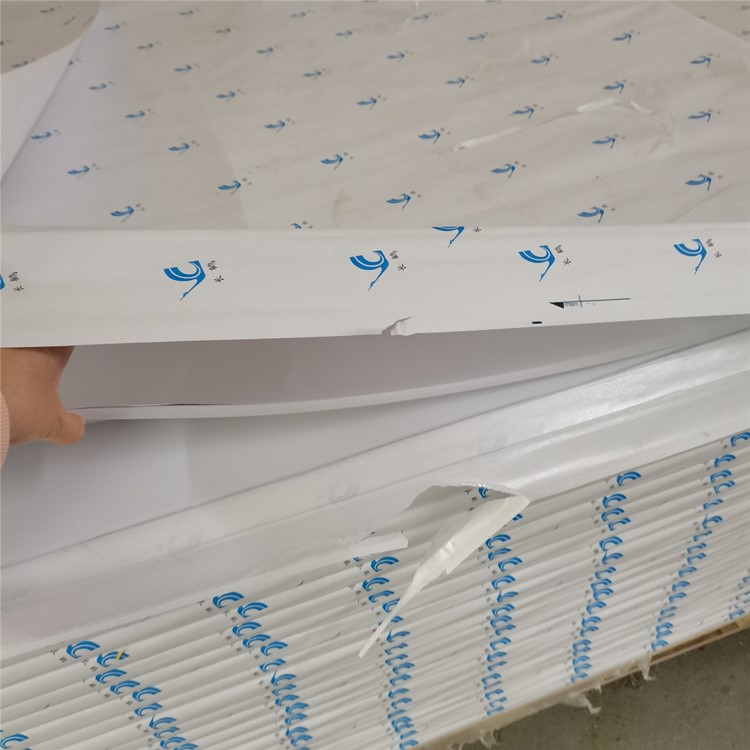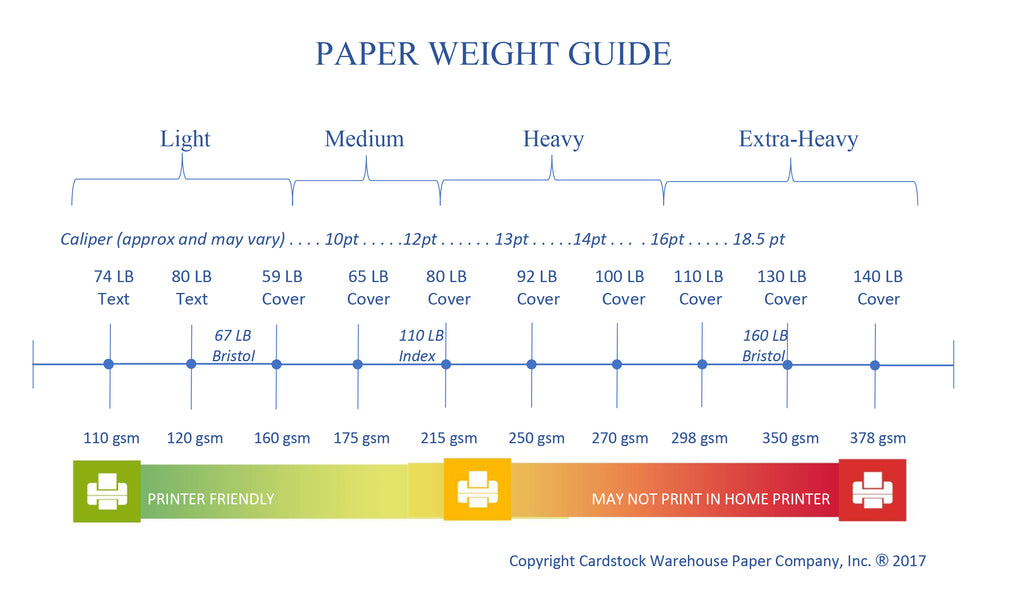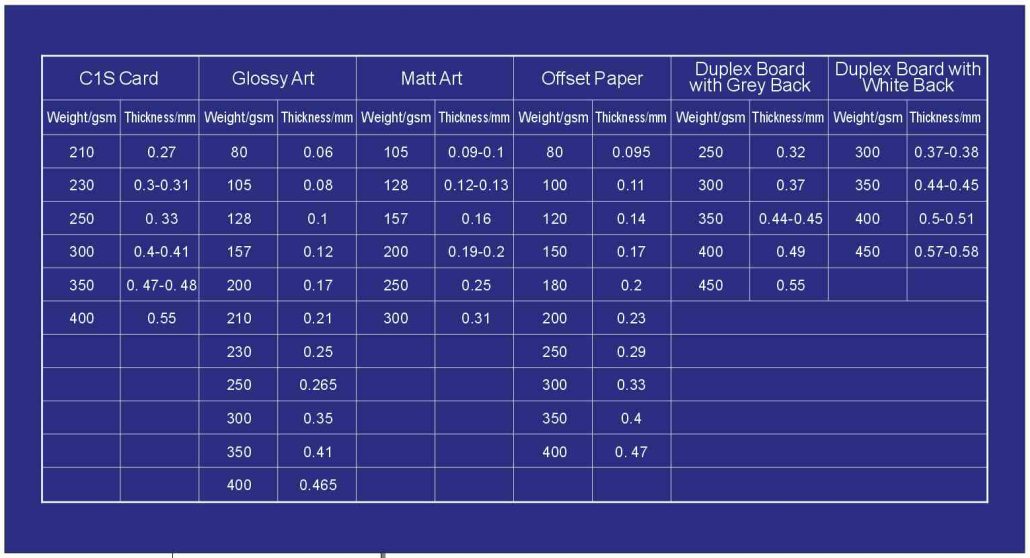
Knowing paper weight is essential for paper box packaging or print shop, as it will affect how your items are printed. But many people don’t know that there are so many types of paper weight to choose from. In fact, the options can be downright overwhelming. So how do you know which one is the right paper weight for you?
Unlike other materials, the paper has a wide range of weights or thicknesses that it can be made in. This is due to the fact that paper is made from plant fibers, which can be of varying thicknesses.
This guide will help you understand the basics of paper weights and how to find the perfect one for your needs. Whether you need a heavy-duty paper weight for paper box packaging or use the paper for book printing, we’ve got you covered. Keep reading for all the information you need to make an informed decision about your next paper weight.
What Is a Paper Weight?
A paper weight is a unit of measurement that is used to determine the thickness of a sheet of paper. The standard unit of metric measurement for paper weight is the pound, which is abbreviated as “lb.” or sometimes “#”.” The heavier the paper, the more pounds it will weigh.
Basics of Paper
Pounds
The thickness of the paper stock will determine the weight, which can range from 20 to 140 pounds.
So if you’re printing something that needs to be thick and sturdy, like a business card or a postcard, you’ll want to use card stock. Otherwise, the bond paper will probably suffice. Just keep in mind that NOT the heavier the paper, the more it will cost. which depends on the specific weight that you use.
GSM
GSM refers to the weight of one square meter of paper. Because of its lack of use in the US, GSM is typically only used internationally.
There are certain benefits to using GSM instead of points or pounds, such as its ease of use. For example, when talking about the GSM of paper, 100 grams is approximately 2.94 ounces, making it simpler to compare the weights of various types of paper.
Paper Types
Different types of paper are classified by weight, stock, and purpose.
Coated Stocks-gloss or matt art for brochures, magazines
Coated stocks are professional looking and add a clean look to any project. They are available in gloss and silk varieties.
Coated stocks can be used for pocket folders, packaging, displays, or postcards. The stocks help protect the printed piece from smudges, fingerprints, or other contaminants that could damage the final product’s look.
Coated stocks generally have a more vibrant color range than uncoated ones, providing a more eye-catching final product. When deciding which type of stock to use for a project, it is important to consider the needs of the finished product. Coated stocks are great for adding a professional touch to any project.
54 lb text wt = 80 gsm
61 lb text wt = 90 gsm
68 lb text wt = 100 gsm
82 lb text wt = 120 gsm
101 lb text wt = 150 gsm (equal to 157gsm in china)
122 lb text wt = 180 gsm
135 lb text wt = 200 gsm
Uncoated Stocks-wood free or offset for novels, school books
Uncoated stocks are a type of paper with no coating, such as glossy. They are available in a wide range of weights and finishes, making them suitable for various uses.
One advantage of uncoated papers is that they often provide a more natural look and feel, making them an excellent choice for printed materials such as booklets, brochures, and invitations.
Another advantage is that uncoated stocks are more difficult to smudge or fingerprint, which can be important for documents that will be handled frequently.
54 lb text wt = 80 gsm
68 lb text wt = 100 gsm
81 lb text wt = 120 gsm
95 lb text wt = 140 gsm
122 lb text wt = 180 gsm
Why Is Paper Weight Important?
Here’s a quick overview of why paper weight is essential:
Different Needs
Different paper weights may be more or less appropriate depending on what the final product will be used for. For example, if you are printing a cardstock box, you’ll want to use a heavier paper stock to feel substantial and look professional. Also, Surface finishing plays a big role in the final appearance of a printed piece, and some crafts are unsuitable for use with lighter paper stocks.
The Thick and Thin of it
A thick paper may appear to be a superior option, but it isn’t always the best option for your project. It’s more expensive, so you wouldn’t want to use it for your posters. You wouldn’t use the typical thin sort of paper for your booklet cover or paper boxes, either.
- Text Paper – Text paper is a thin paper used for everyday printing. It is available in different thicknesses. Normally we use them for book content printing.
- Cover Paper – Cover paper is a thicker paper than text and is used for things like book covers and postcards. Heavier cover stocks are also more durable, making them a good choice for items that will be handled frequently, such as business cards, perfect bound books, and hardcover binding books.
- Card Stock – Card stock is a thick paper used for business cards, postcards, Thank You cards, hang tags, and folding carton cardstock boxes. It is available in a variety of weights, but heavier weights are more durable and less likely to bend or crease.
Gloss or Matte Finish
Paper stocks are available in both gloss and matte finishes. Glossy stocks have a shiny finish that makes colors pop, but it can be difficult to read text printed on glossy paper. Matte stocks have a muted finish that is easier to read, but colors may not be as vibrant.
If you need to print text that will be more luxurious, choose a matte stock. If you want to make colors stand out, choose a glossy stock, for example, children’s books.
Common Paper Weights and Their Uses
Though there are many types of papers available, here are some of the most commonly used and their typical uses. Paper weight conversion between lb, pt, and gsm for text paper, cover paper, and card stock.
1. Text paper (50 to 100 lbs)
Text paper, as the name implies, is used to print text. It’s commonly a higher quality variant of book paper and is mostly used in commercial printing businesses. Text paper may be utilized for internal memos, books, stationery, magazines, brochures, letterhead printing jobs, thesis papers, flyers, and other marketing materials.
50lb=75gsm
60lb=90gsm
70lb=105gsm
80lb=120gsm
100lb=150gsm (equal to 157gsm in china)
2. Cover paper (65 to 130 lbs)
Cover paper is a term used to describe paper that’s thick and rigid (although the paper thickness may vary considerably). We use this paper stock for book covers, postcards, business cards, and hang tags.
65lb Cover=175 gsm
80lb Cover=215 gsm
100lb Cover=270 gsm
130lb Cover=350 gsm
8 pt cover wt=195 gsm
9 pt cover wt=225 gsm (Use 230 gsm)
10 pt cover wt=234 gsm (Use 230 gsm)
12 pt cover wt=272 gsm (Use 300 gsm)
14 pt cover wt=306 gsm (Use 300 gsm) 16pt cover wt=340 gsm (Use 350 gsm) 18pt cover wt=358 gsm (Use 350 gsm) 20pt cover wt=420gsm (Use 400 gsm)
3. Card Stock (110 to 140 lbs)
Card stock is a highly durable and reasonably solid option. It’s used for paperboard boxes, postcards, and folders.
110lb=298gsm
130lb=350gsm
140lb=378gsm
14 pt=265gsm (Use 300gsm)
16 pt=296gsm (Use 300gsm)
18 pt=324 gsm (Use 350gsm)
20pt=345gsm (Use 350gsm)
22pt=379gsm (Use 400gsm)
24pt=407gsm (Use 400gsm)
26pt=435gsm (Use 450gsm)
4, Grey board for hardcover books or rigid gift boxes
60 pt= 1.4 mm = 1,000 gsm
65 pt=1.8 mm = 1,100 gsm
70 pt=2.0 mm = 1,200 gsm
80 pt=2.25 mm = 1,400 gsm
88 pt=2.5 mm = 1,600 gsm
92 pt=2.8 mm = 1,700 gsm
98 pt=3.0 mm = 1,800 gsm
140 pt=3.4 mm = 2,200 gsm
Paper Weight Chart
For your quick understanding of paper weight, here is a paper weight chart:

Paper Thickness Conversion Table

Tips on Using Paper Weight
Now that you understand the different types of paper weights available, here are some tips to help you choose the right one for your project.
- Choose the right type of paper for your printing and packaging project.
- Be aware that heavier weights will cost more.
- Consider the needs of the project when choosing a finish.
- Remember that U.S. basis weight may be different from those in other countries.
- The paper’s weight has an impact. Cutting, folding, and stitching get more difficult as the paper weight increases, so consider how you’ll use it.
- Choose the right weight for your project to avoid waste.
- Be sure to test print on the chosen paper stock before printing a large job.
- Store paper in a cool, dry place to prevent warping or curling.
- Be sure to recycle any unused paper.
Paper Weight Guide – The Bottom Line
Now that we know a little more about paper weight let’s put it together and see the bottom line.
The bottom line is that paper weight measures how much a paper weighs per square meter. The heavier the paper, the more it will weigh.
Different paper weights could be used in different projects. We need to make it clear before bulk printing or packaging orders.
And that’s really all there is to it! Understanding paper weights concept is not easy for some people, but it’s important to understand paper weight if you want to choose the right paper for your next print job.
Contact us if you have any other questions. We would like to help!